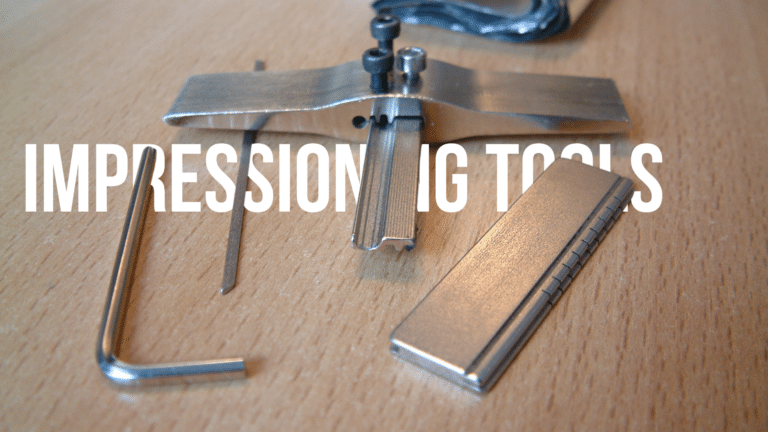WHAT IS IMPRESSIONING TOOLS AND IT’S USED
Impressioning tools are essential instruments used by locksmiths to create working keys for locks. By making impressions of a lock’s internal components, such as pins and wards, locksmiths manipulate a blank key within the lock while applying pressure. This process allows the key to take on the precise shape needed to operate the lock effectively.
The Fundamentals of Key Impressioning
The fundamentals of key impressioning revolve around the meticulous process of crafting working keys for locks. Locksmiths utilize impressioning tools to make impressions of the lock’s internal components, such as pins and wards, on a blank key. By manipulating the key within the lock while applying controlled pressure, the locksmith can create a key that precisely matches the lock’s configuration. This technique requires a keen eye for detail, patience, and skill to achieve accurate results. Through mastering the fundamentals of key impressioning, locksmiths can provide effective solutions for various lock-related challenges.
Tools of the Trade
Impressioning tools are indispensable implements within the locksmith’s toolkit, serving as the linchpin for crafting working keys with precision and accuracy. At the core of these tools are blank keys, which provide the blank canvas upon which the key will be fashioned. These blanks come in various shapes and sizes to accommodate different lock types and configurations.
Moreover, manipulation tools play a crucial role in the impressioning process, facilitating the delicate dance between the key and lock. Plug spinners and cap removal tools are among the arsenal of manipulation tools utilized by locksmiths. These tools enable locksmiths to manipulate the lock mechanism while applying controlled pressure, allowing the key to take on the exact shape and configuration required for seamless operation.
Step-by-Step Guide to Key Impressioning
A step-by-step guide to key impressioning provides a comprehensive walkthrough of the intricate process locksmiths use to create working keys for locks. Here’s a detailed breakdown of each stage:
Preparation: Begin by selecting a suitable blank key that matches the type and size of the lock being serviced. Ensure the key is clean and free from any defects or imperfections.
Insertion: Insert the blank key into the lock you intend to impression. Ensure it is fully inserted and seated securely within the keyway.
Manipulation: Using manipulation tools such as plug spinners or cap removal tools, apply controlled pressure to the key while gently manipulating it within the lock. This manipulation causes the key to interact with the internal components of the lock, leaving impressions on the blank key.
Observation: Carefully remove the blank key from the lock and inspect it for any impressions or marks. These impressions serve as indicators of the lock’s internal configuration, including the positions of pins, wafers, and wards.
Refinement: Armed with impressioning files and kits, meticulously refine the key’s profile to match the impressions left by the lock’s internal components. File down any excess material and shape the key until it closely resembles the original key profile.
Testing: Once the key has been refined, reinsert it into the lock and test its functionality. Ensure the key smoothly enters and turns within the lock without any resistance or sticking.
Fine-tuning: If necessary, fine-tune the key’s profile and make any additional adjustments to ensure optimal performance. This may involve further refinement with impressioning tools or minor alterations to the key’s shape.
Completion: Once satisfied with the key’s functionality and fit, finalize the impressioning process by providing the client with their newly crafted working key. Ensure they are fully briefed on proper key usage and maintenance to prolong the key’s lifespan.
By following this step-by-step guide to key impressioning, locksmiths can effectively create precise and reliable keys tailored to each lock’s unique specifications, providing seamless access solutions for their clients.
Techniques and Tips for Success
To ensure success in key impressioning, locksmiths rely on a combination of techniques and tips honed through experience and expertise. Here are some invaluable strategies for mastering this intricate craft:
Controlled Pressure: Apply consistent and controlled pressure while manipulating the key within the lock. Avoid excessive force, as it may damage the lock or distort the impressions on the blank key.
Gentle Manipulation: Use subtle movements to manipulate the key within the lock, allowing it to interact with the internal components without causing unnecessary friction or resistance.
Patience and Persistence: Key impressioning requires patience and persistence. Take your time to observe the impressions left on the blank key and refine its profile gradually to match the lock’s configuration.
Keen Observation: Pay close attention to the impressions and marks left on the blank key after each manipulation. These subtle cues provide valuable insights into the internal workings of the lock and guide the refinement process.
Proper Tool Selection: Choose the right impressioning files and kits for the job, ensuring they are suited to the type and size of the lock being serviced. High-quality tools with fine precision ensure accurate shaping and profiling of the key.
Fine-Tuning Techniques: Utilize fine-tuning techniques to perfect the key’s profile and fit within the lock. This may involve minor adjustments to the key’s shape or the removal of any rough edges or imperfections.
Experience-Based Insights: Draw upon past experiences and insights gained from previous impressioning jobs. Every lock presents its own unique challenges and nuances, and learning from past successes and failures is invaluable in refining your impressioning skills.
Continuous Learning: Stay abreast of advancements in impressioning techniques and tools through continuous learning and professional development. Attend workshops, seminars, and training sessions to enhance your skills and stay ahead of industry trends.
By incorporating these techniques and tips into your approach to key impressioning, you can elevate your craft and achieve consistent success in creating precise and reliable keys for locks. Remember, mastering key impressioning is a journey that requires dedication, practice, and a commitment to excellence.
Conclusion
As we conclude our journey through the world of key impressioning, we emphasize the importance of skill, precision, and ethical practice in locksmithing. Whether you’re a seasoned professional or an aspiring locksmith, mastering the art of key impressioning opens doors to endless possibilities in the world of security and locksmithing. Unlock your potential and elevate your craft with the timeless art of key impressioning.
FREQUENTLY ASKED QUESTION
How can I find a locksmith who offers key impressioning services?
Look for locksmiths in your area with experience and expertise in key impressioning. You can also ask for recommendations from friends, family, or trusted professionals in the security industry. Additionally, check online reviews and testimonials to ensure you’re working with a reputable locksmith.
Can key impressioning damage the lock?
When done correctly, key impressioning should not damage the lock. However, inexperienced locksmiths or improper techniques can potentially cause damage, so it’s essential to entrust impressioning to qualified professionals.
Is key impressioning a reliable method for creating keys?
When performed by a skilled locksmith using proper techniques and tools, key impressioning is a reliable method for creating precise and functional keys for locks.
How long does it take to impression a key?
The time required for key impressioning can vary depending on factors such as the complexity of the lock, the locksmith’s skill level, and the condition of the blank key. It typically takes anywhere from a few minutes to an hour to impression a key successfully.
Is key impressioning suitable for all types of locks?
Key impressioning is most commonly used for pin tumbler locks but can also be applied to other types of locks with internal components that can leave impressions on a blank key.
What tools are used in key impressioning?
Key impressioning requires specialized tools such as blank keys, impressioning files and kits, and manipulation tools like plug spinners and cap removal tools.
How does key impressioning work?
Locksmiths insert a blank key into the lock and manipulate it while applying pressure. This process allows the key to take on the shape of the lock’s pins, wafers, and wards, resulting in a precise fit and functionality.


